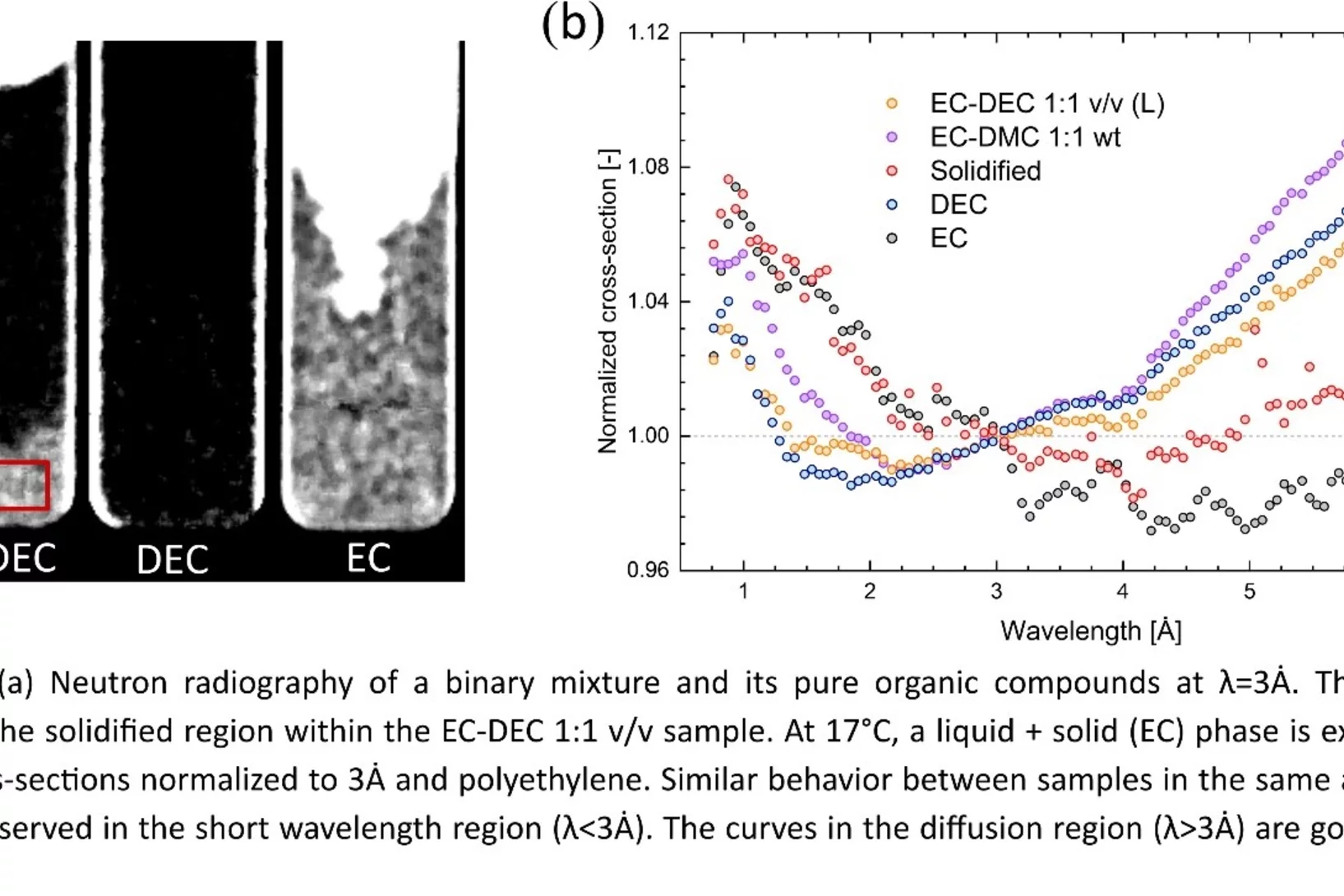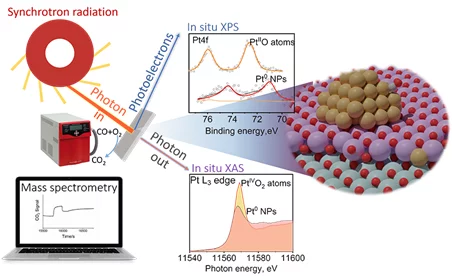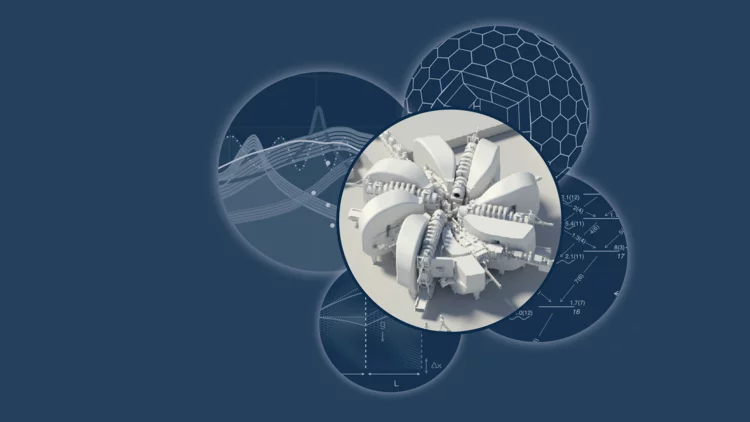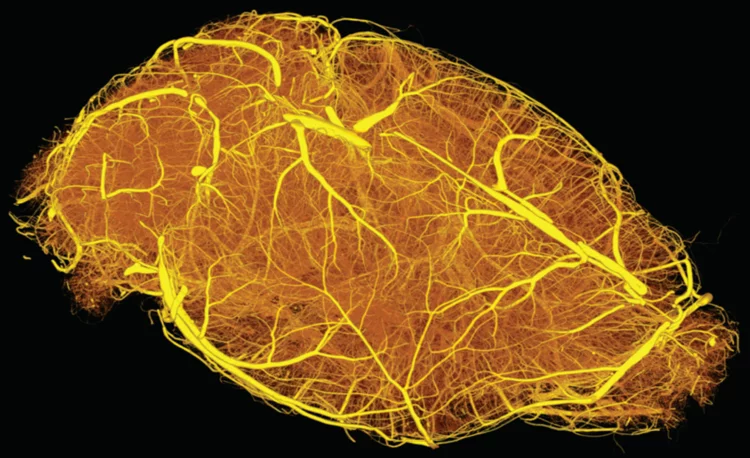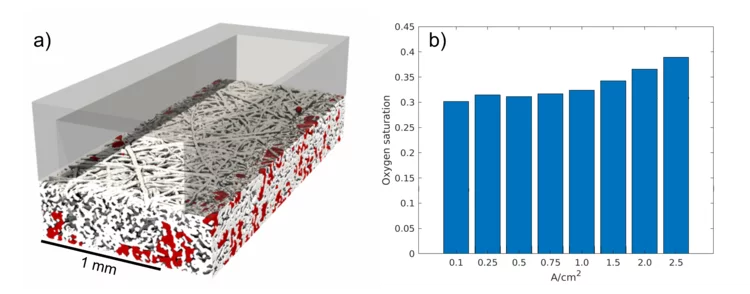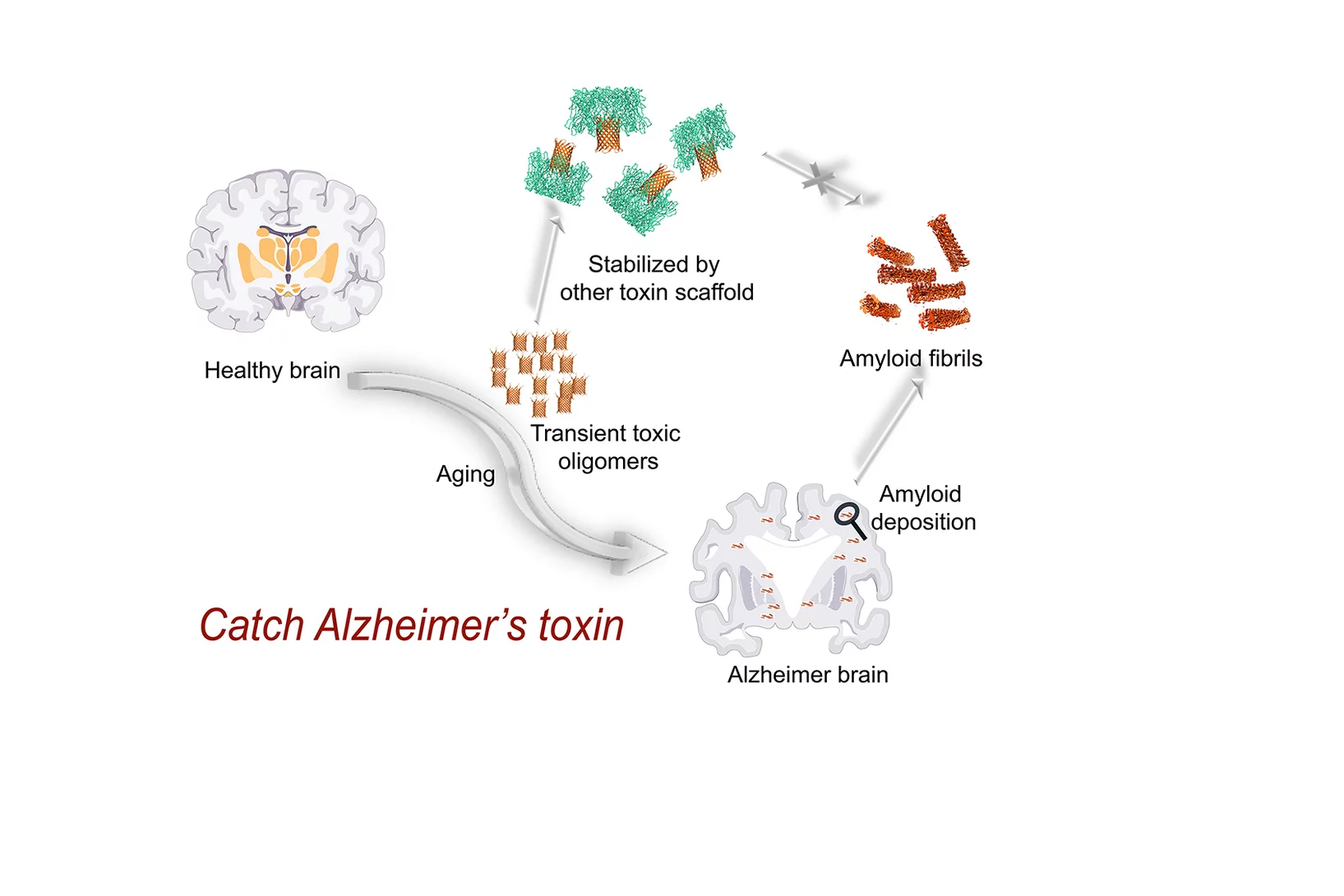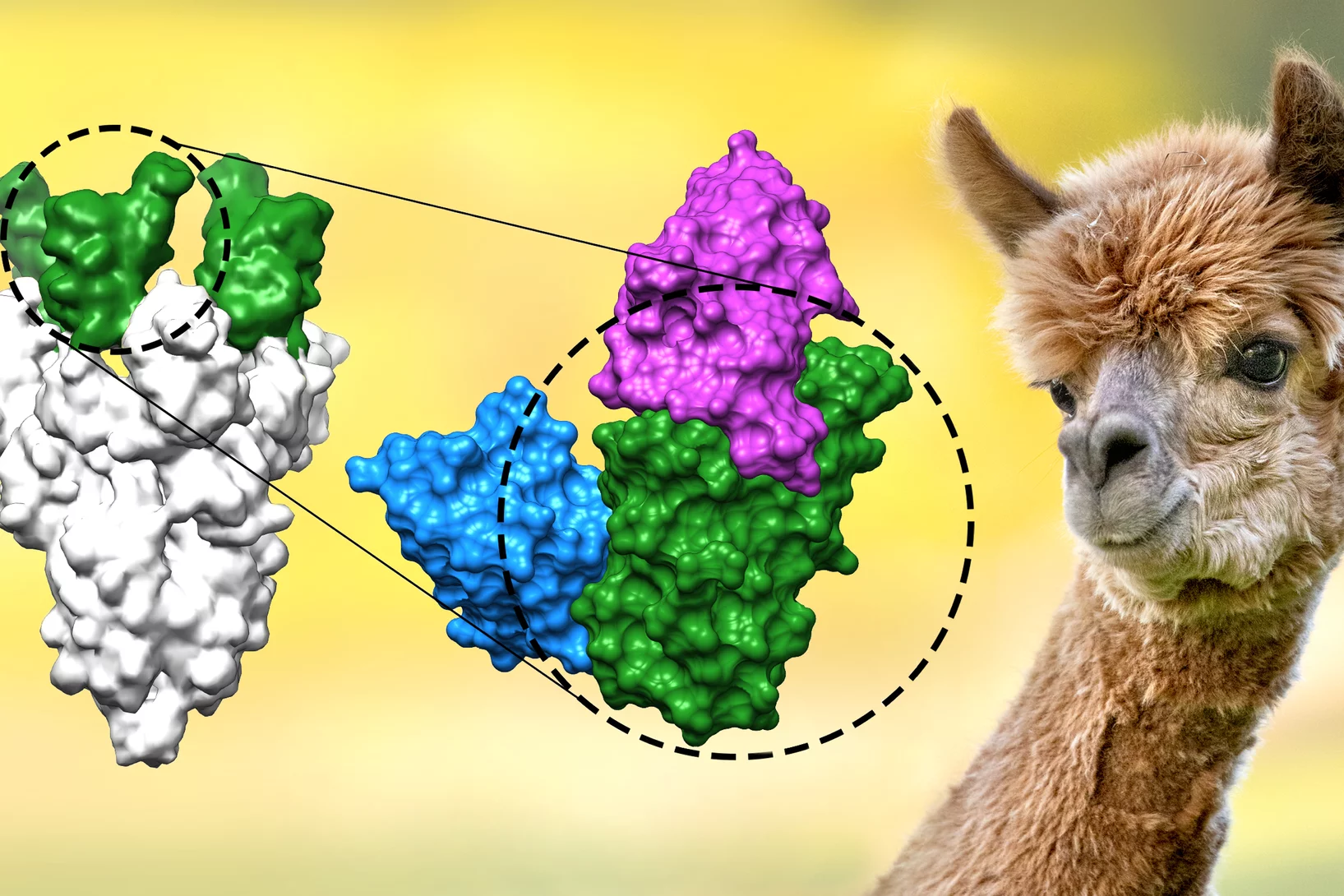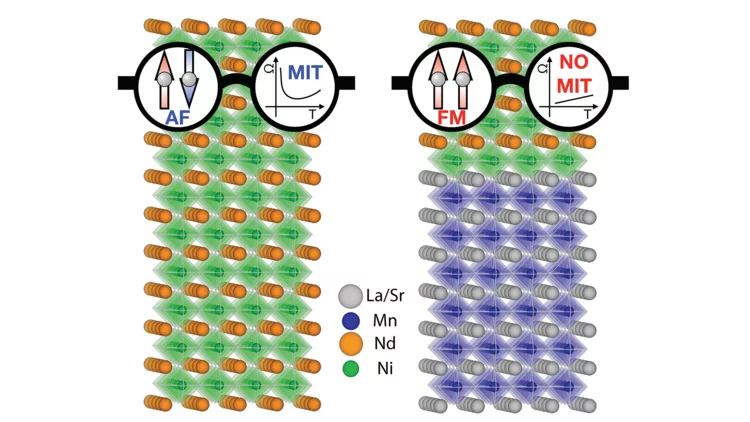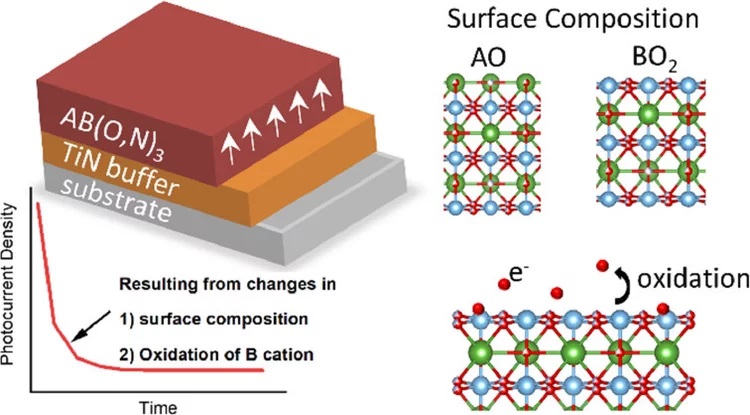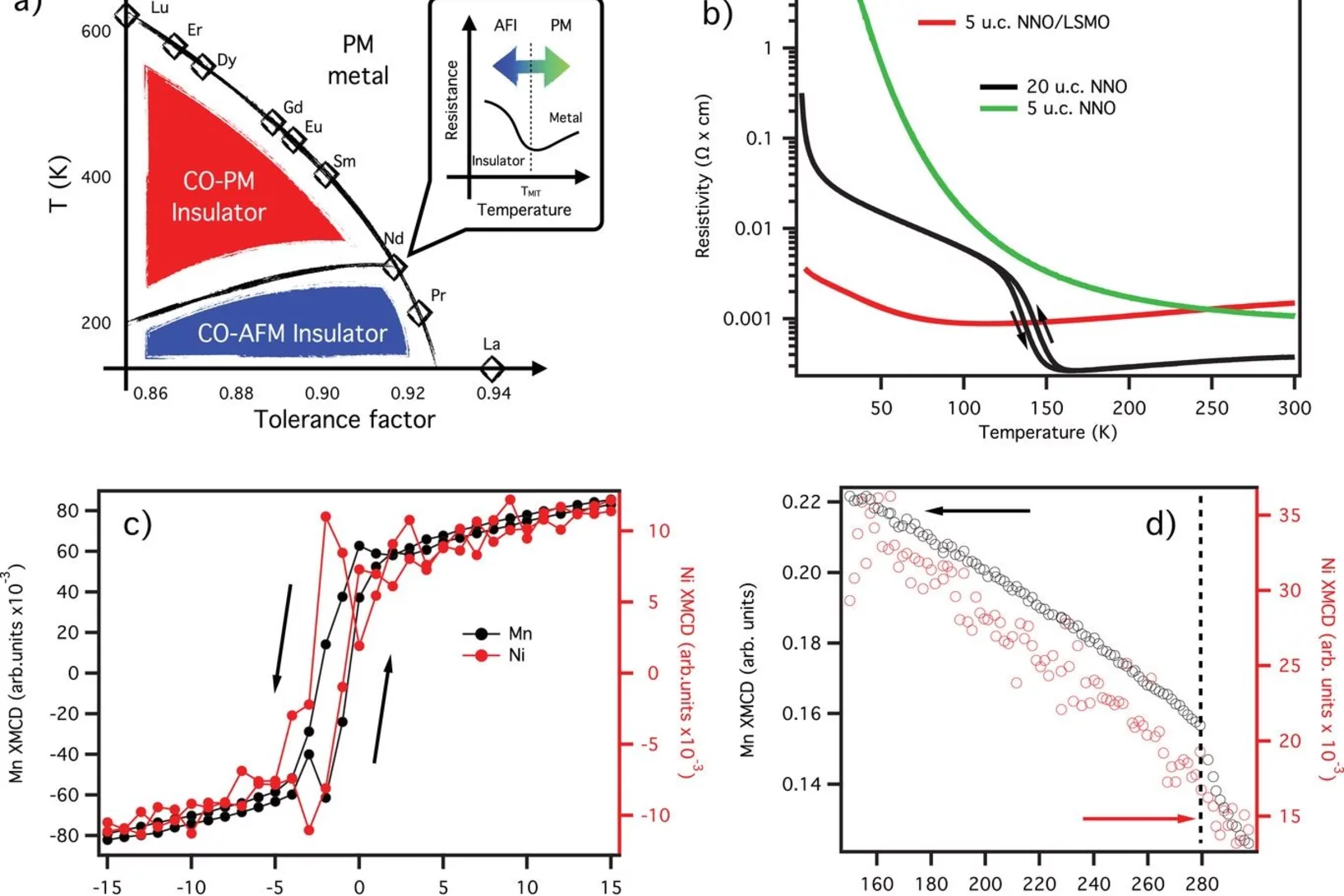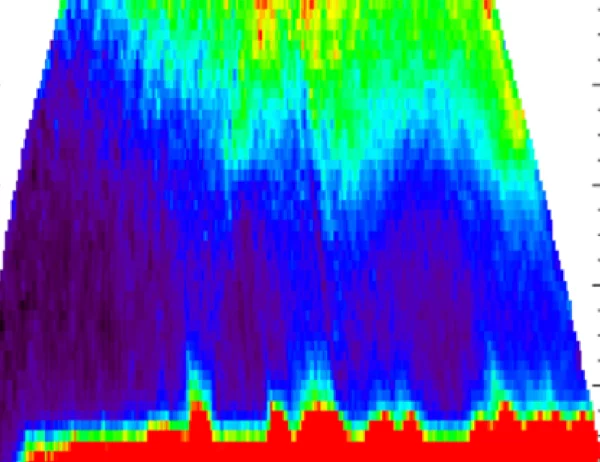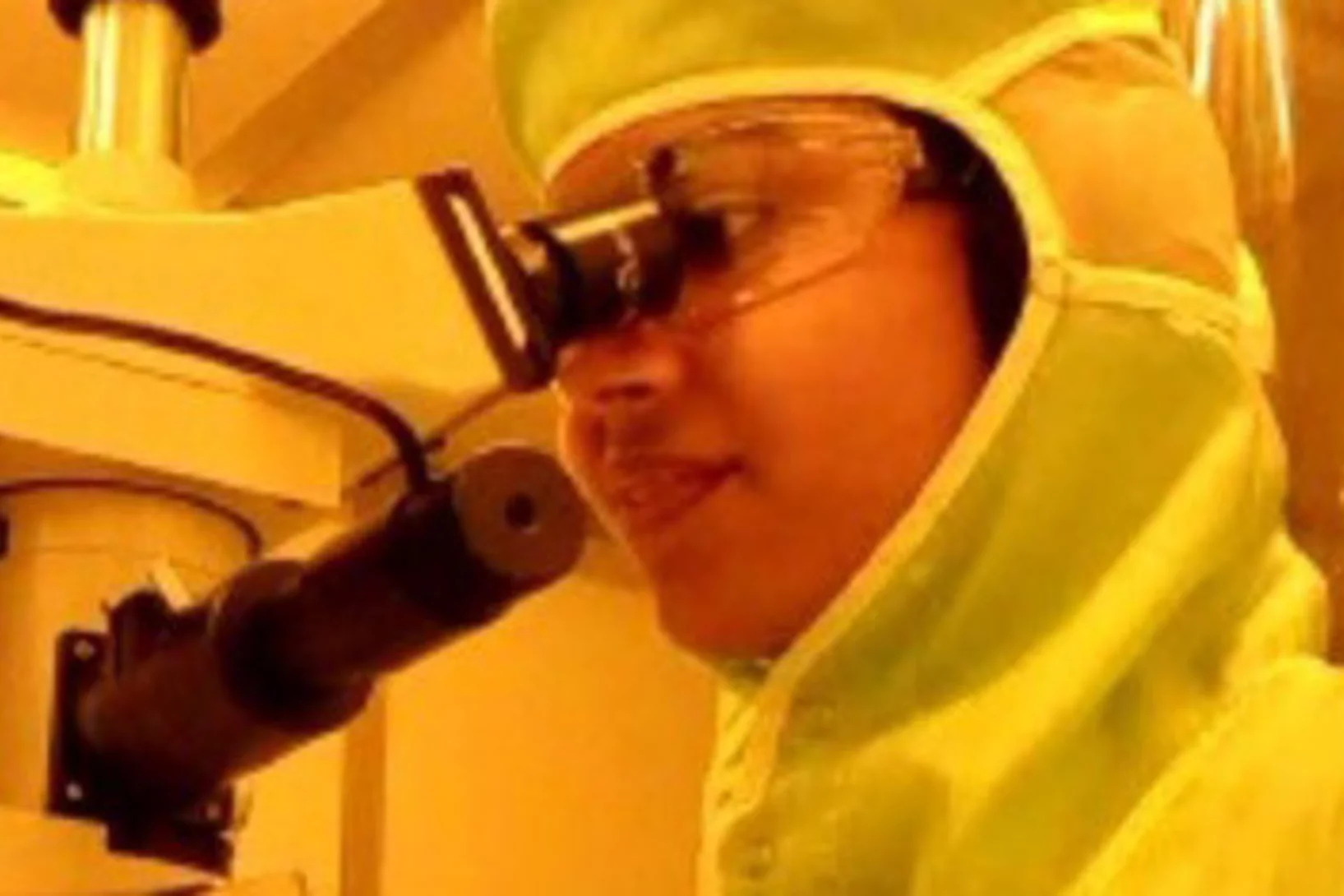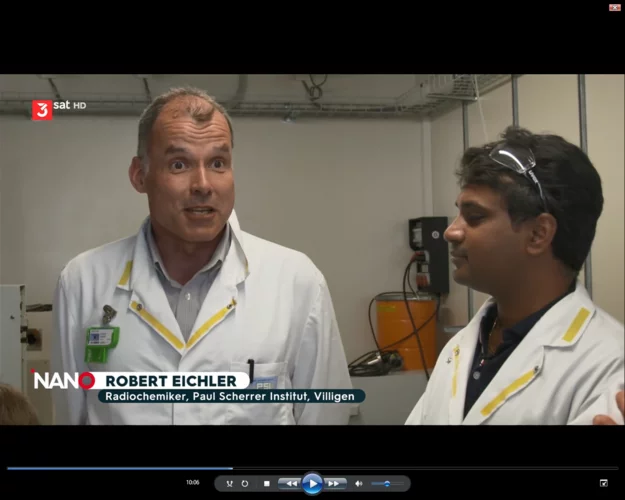Magnetic Bistability at a Record High Temperature in a Sub-Monolayer of Endohedral Fullerenes
A team of the Leibniz Institute for Solid State Research (IFW) from Dresden, Germany, led by Dr Alexey Popov has now demonstrated a record blocking temperature of 28 Kelvin at which the magnetic bistability still survives in a submonolayer of a chemically functionalized species of endofullerenes. In this research, X-ray magnetic circular dichroism measurements at low temperatures and high magnetic field at the X-Treme beam line are crucial. The results pave the way toward using such single-molecule magnets as information carriers or magnetic bits.
Presentation Prize 2021 (Doktorandentag, Institute of Pharmaceutical Sciences, ETH Zurich)
Luisa Deberle, PhD student in the “Nuclide Chemistry Group” received the price for the best oral presentation
Successful Ambizione Grant Applicant
Kaspar Dällenbach, Scientist at the Laboratory of Atmospheric Chemistry (LAC) at the Paul Scherrer Institute (PSI) was granted the Ambizione Grant 2020 with his project “Particulate air pollution sources in low-income megacities (PRESSING)”.
EANM Marie-Curie Award 2021 went to VIVIANE TSCHAN
Viviane Tschan received this year’s Marie-Curie Award for a new concept of radioligand therapy of prostate cancer.
NET ZERO Day of the four RIs at Empa
Climate change is one of the biggest challenges humanity is facing. It requires an approach, in which competences and capacities in research are combined across Switzerland to develop solutions for a transformation of our society towards net zero CO2 emissions.
Towards in situ imaging of electrolyte physical and chemical changes in Li-ion batteries
The Lithium conducting electrolyte is a critical component of Li-ion batteries, as it has an important impact on performance and its durability, in particular in case of extreme environmental conditions. At low temperatures, a partial solidification can occur, while high temperatures can promote the degradation of the electrolyte. Using time-of-flight (ToF) neutron radiography, the possibility of imaging such changes in a fully non-invasive manner was demonstrated for the first time.
Direct evidence of cobalt oxyhydroxide formation on a LSCO perovskite water splitting catalyst
In situ and ex situ ambient pressure X-ray photoelectron spectroscopy have been used to investigate the solid-liquid interface of a LSCO water splitting catalyst. Experimental results, supported by theoretical simulations of the core-electron binding energy, detect the formation of cobalt oxyhydroxide under working conditions.
Successful Ambizione Grant Applicant
Alexander Muroyama, Postdoctoral Researcher at the Electrochemistry Laboratory (LEC) at the Paul Scherrer Institute has successfully applied for the Ambizione Grant 2020 with his project “A novel process for electrochemical direct-air capture of CO2”.
Temperature and Reaction Environment Influence the Nature of Platinum Species Supported on Ceria
The evolution of atomically dispersed platinum species on ceria has been investigated by means of ambient pressure X-ray photoelectron spectroscopy and X-ray absorption near edge structure spectroscopy. Experimental results, supported by the theoretical simulation of the phase diagram, show that atomically dispersed species evolve towards nanoparticles during the activation of the catalysts. Such an evolution is influenced by the temperature and the reaction environment.
Successful Ambizione Grant applicant
Patrik Winiger, Research Grant Advisor and Project Manager at ETH Zurich, successfully applied for the Ambizione Grant 2020 with the project “Macromolecular Aerosols in the Cryosphere from the Arctic to the Alps – MACrAA”. The idea was developed together with the Laboratory for Atmospheric Chemistry (LAC) at PSI. The LAC is a global leader in aerosol analytics and source identification. They own and operate a unique laboratory infrastructure with various instruments and multiple aerosol simulation chambers available for researchers.
Magnetic Field Induced Quantum Spin Liquid in the Two Coupled Trillium Lattices of K2Ni2(SO4)3
Quantum spin liquids are exotic states of matter that form when strongly frustrated magnetic interactions induce a highly entangled quantum paramagnet far below the energy scale of the magnetic interactions. Three-dimensional cases are especially challenging due to the significant reduction of the influence of quantum fluctuations. Here, we report the magnetic characterization of K2Ni2(SO4)3 forming a three-dimensional network of Ni2+ spins.
Dr. Manuel Guizar-Sicairos is awarded ICO prize
Dr. Manuel Guizar-Sicairos, beamline scientist at the cSAXS beamline, is the 2019 recipient of the International Commission for Optics (ICO) Prize. The distinction was awarded in the EOSAM conference in Rome.
Unveiling unconventional magnetism at the surface of Sr2RuO4
Materials with strongly correlated electrons often exhibit interesting physical properties. An example of these materials is the layered oxide perovskite Sr2RuO4, which has been intensively investigated due to its unusual properties. Whilst the debate on the symmetry of the superconducting state in Sr2RuO4 is still ongoing, a deeper understanding of the Sr2RuO4 normal state appears crucial as this is the background in which electron pairing occurs. Here, by using low-energy muon spin spectroscopy we discover the existence of surface magnetism in Sr2RuO4 in its normal state.
ReMaP – Current status of energy research
With its Energy Strategy 2050 Switzerland aims – beside other goals – to promote the use of domestic renewable energy and to develop the electricity power grid, which plays a decisive role in the upgrading of the system of electricity power supply. A lot of research needs to be done to achieve these ambitious goals. An important research project in this area is ReMaP and its status quo was presented at the Paul Scherrer Institute PSI on 28 September.
Aging of Diesel oxidation catalysts
Diesel oxidation catalysts mitigate toxic emissions in heavy duty vehicles but they age during operation due to deposition of chemical elements and structural changes in the active Platinum group metals. Here, vehicle aged catalysts have been characterised in detail to better understand the catalyst deterioration. Such understanding have been applied in the attempts to replicate the aging in the lab.
Ultrafast electron localization
This experiment performed at SwissFEL shows how fast we can localize electrons out of an electron gas into correlated, well localized states of a material. It is based on a combined ultrafast x-ray absorption and diffraction experiment on an intermetallic system.
CHRISP — All the key results in one place
A specialSciPost volume, entitled “Review of Particle Physics at PSI”, has recently been completed.
The ICE MEMORY program
As an international initiative, ICE MEMORY aims at collecting heritage ice cores from the world’s key endangered glaciers to store them under safe conditions and international governance in Antarctica for future generations of scientists.
Unpaired Weyl Point observed for the first time in crystalline solid
Flows need sources and sinks. That’s why, in a new class of exotic materials called Weyl semimetals, the sources and sinks of Berry curvature – dubbed Weyl points – were believed to exist only in pairs. Now researchers at PSI have observed unpaired Weyl points for the first time in a crystalline solid. This discovery, which upends conventional thinking and the so-called Nielson-Niomiya no-go theorem, demonstrates the unique properties of "nodal wall" Weyl semimetals in comparison to conventional Weyl systems having only zero-dimensional Weyl nodes.
«Price tags» of the Swiss energy transition
NZZ am Sonntag has picked up this highlight in its issue on March 7th, 2021: The highlight refers to the analysis performed in SCCER Joint Activity Scenarios and Modelling, where PSI-LEA performed the analysis of the energy transition pathways.
Hierarchical imaging and computational analysis of three-dimensional vascular network architecture in mouse brain
An international team involving researchers from the University and University Hospital Zürich, the Krembil Research Institute and the University and University Hospital in Toronto (Canada), the Department of Physics of Jyväskylä (Finland), the University of Leuven (Belgium), the Johannes Kepler University in Linz (Austria), the Novartis Institutes for Biomedical Research in Emeryville (USA), the ETH Zürich and the Paul Scherrer Institute has developed a protocol that enables hierarchical imaging and computational analysis of vascular networks in entire postnatal- and adult mouse brains, enabling direct and quantitative comparisons of the morphological brain vascular network architecture between different postnatal and / or adult developmental stages. The results have been published on Nature Protocols on September 3rd, 2021.
Watch them growing: New mechanistic insights into catalytic methane coupling
Methane valorization is a promising technology to utilize this platform compound to produce aromatics and hydrocarbons. Researchers from PSI and ETH Zürich unveiled this reaction mechanism and observed the molecular growth from the ground up. Besides stepwise CH3 addition, novel routes involving the dimerization of resonantly stabilized propargyl (C3H3) radicals to benzene (C6H6) were identified. These mechanistic insights will aid the development of valorisation strategies.
First direct observation of the oxygen transport in polymer electrolyte water electrolysis
PSI researchers have developed a new methodology for studying the complex transport processes in polymer electrolyte water electrolysis (PEWE). Using advanced operando X-ray tomographic microscopy, we were able to observe for the first time the formation of oxygen pathways in the porous transport layer, in three dimensions. Understanding oxygen transport is crucial for improving PEWE technology and this work provides precious insights for the design of future, better-performing PEWE cells.
A strong commitment for science communication
PSI is engaging in public outreach at a major event in Zürich, the "Scientifica" Science Days September 4 and 5.
Nanobodies against SARS-CoV-2
In a study published in EMBO Journal, researchers at the Max Planck Institute for Biophysical Chemistry, Göttingen, Germany, developed nanobodies that efficiently block the coronavirus SARS-CoV-2 and its variants. The high resolution structural characterization was performed at the X10SA crystallography beamline at the Swiss Light Source.
Creating novel quantum phases via the heterostructure engineering
Within this synergetic collaboration, PSI scientists have investigated the correlation between magnetic and electronic ordering in NdNiO3 by tuning its properties through proximity to a ferromagnetic manganite layer. The main outcome is that the stray magnetic field from the manganite layer causes a novel ferromagnetic-metallic (FM-M) phase in NNO. This work demonstrates the utilization of heterostructure engineering for creating novel quantum phases.
Surface Analysis of Perovskite Oxynitride Thin Films as Photoelectrodes for Solar Water Splitting
Perovskite oxynitride semiconductors have attracted huge interest recently as promising photoelectrode materials for photoelectrochemical (PEC) water splitting. Oxynitride thin films grown by physical vapor deposition are ideal model systems to study the fundamental physical and chemical properties of the surface of these materials, including their evolution. Using a combination of high-sensitivity low-energy ion scattering (LEIS) and X-ray photoelectron spectroscopy (XPS), the surface evolution of LaTiOxNy (LTON) and CaNbOxNy (CNON) thin films before and after the PEC characterizations is monitored. This work provides therefore insight into the surface characteristics and evolution of LTON and CNON oxynitride thin films as photoelectrodes for PEC applications.
Novel structural orthorhombicity in an iron-pnictide superconductor
Researchers from University of Zurich describe the experimental observation of a new orthorhombic structural phase in the superconducting iron-pnictide compound Pr4Fe2As2Te0.88O4. In contrast to nematicity found in underdoped iron pnictides this phase transition is not electronically driven.
First Components of ESTIA arrive at ESS in Lund
The European Spallation Source (ESS) is currently under construction in Lund, Sweden and is set to become the most powerful neutron source in Europe and world-wide. The PSI-ESS project is delivering state-of-the-art contributions to five instruments at ESS, which will be home to a suite of 15 novel instruments. Among the five PSI instruments, the reflectometer ESTIA stands out as it is delivered in its entirety by PSI ...
Prof. Dr. Roger Schibli has been elected a Council Member 2020-2022 of the European Society for Molecular Imaging - ESMI
European Society for Molecular Imaging - ESMI
The ESMI represents and advocates IMAGING SCIENCE
The ESMI is providing an international, interdisciplinary platform for knowledge exchange in the field covering basic sciences, translational aspects as well as clinical applications.
An electrochemical membrane processes for CO2 capture
CO2 capture from dilute gas mixtures (e.g., combustion flue gases, air) is increasingly recognized as a critical technological pathway towards stemming catastrophic climate change. Conventional thermal-based processes for removing CO2 from flue gas (e.g., amine scrubbing) are energy intensive and significantly reduce power plant efficiency. Electrochemical separation approaches have the potential to reduce these power requirements considerably by using electrons to transport CO2 as (bi)-carbonate ions across an alkaline membrane.
Proximity-Induced Novel Ferromagnetism Accompanied with Resolute Metallicity in NdNiO3 Heterostructure
Employing X-ray magnetic circular dichroism (XMCD), angle-resolved photoemission spectroscopy (ARPES), and momentum-resolved density fluctuation (MRDF) theory, the magnetic and electronic properties of ultrathin NdNiO3 (NNO) film in proximity to ferromagnetic (FM) La0.67Sr0.33MnO3 (LSMO) layer are investigated. The experimental data shows the direct magnetic coupling between the nickelate film and the manganite layer which causes an unusual ferromagnetic (FM) phase in NNO. Moreover, it is shown the metal–insulator transition in the NNO layer, identified by an abrupt suppression of ARPES spectral weight near the Fermi level (EF), is absent. This observation suggests that the insulating AFM ground state is quenched in proximity to the FM layer. Combining the experimental data (XMCD and AREPS) with the momentum-resolved density fluctuation calculation (MRDF) reveals a direct link between the MIT and the magnetic orders in NNO systems. This work demonstrates that the proximity layer order can be broadly used to modify physical properties and enrich the phase diagram of RENiO3 (RE = rare-earth element).
Magnetic correlations in the triangular antiferromagnet FeGa2S4
The crystal structure and magnetic correlations in triangular antiferromagnet FeGa2S4 are studied by x-ray diffraction, magnetic susceptibility, neutron diffraction, and neutron inelastic scattering. We report significant mixing at the cation sites and disentangle magnetic properties dominated by major and minor magnetic sites.
Two-color x-ray free-electron laser by photocathode laser emittance spoiler
A novel and noninvasive method for high-energy two-color x-ray FEL emission was demonstrated at SwissFEL. In the experiment, a laser emittance spoiler pulse is overlapped with the primary photocathode laser pulse to locally spoil the beam emittance and inhibit the FEL emission from the central part of the beam, ultimately resulting in X-ray emission at two wavelengths. High spectral stability and the possibility to independently control the duration and intensity ratio between the two-color X-ray pulses is demonstrated. The laser emittance spoiler also enables shot-to-shot selection between one and two-color FEL emission and further, as it does not contribute to beam losses, it is compatible with high repetition-rate FELs.
This article has been selected as the winner of the first Ernest Courant Outstanding Paper Recognition, a honor sponsored by the journal Physical Review Accelerators and Beams (PRAB) and the APS Division of Physics of Beams (DPB). This honor recognizes the most outstanding paper published in PRAB annually.
Soft-mode dynamics in the ferroelectric phase transition of GeTe
GeTe that exhibits a strong anharmonicity and a ferroelectric phase transition between the rhombohedral and cubic structures has emerged as one of the leading thermoelectric materials. Herein, combining molecular dynamics simulations and inelastic neutron scattering measurements, the lattice dynamics in GeTe have been investigated to reveal the soft-mode mechanisms across the phase transition.
Enhanced Reducibility of the Ceria-Tin Oxide Solid Solution Modifies the CO Oxidation Mechanism at the Platinum-Oxide Interface
The introduction of tin into ceria strongly influences its reducibility. In turn, the reaction mechanism towards the oxidation of carbon monoxide changes: the oxidation rate increases, the apparent activation energy decreases and the reaction order in oxygen increases.
Full-field X-ray absorption tomography reveals the chemical structure of defects in metal-organic frameworks
Cryo-full-field XANES computed tomography was used to visualize the presence and distribution of a second coordination polymer of reduced copper coordination within defect-engineered HKUST-1 MOF crystals. Observations encourage a revisitation of the structure-property relationships of defect-engineered MOFs.
Analysis of a large-scale turbulent round jet
The entire study is an investigation into the self-similarity behavior [1] of first and second order statistical quantities derived from a large-scale jet flow taken from one of the experiments in the PANDA facility using the Proper Orthogonal Decomposition (POD).
What is presented, are the merits, the potential and the characteristics of the corresponding underlying POD analysis. Proper Orthogonal Decomposition (POD) is a mathematical framework to extract large-scale structures which are otherwise eventually masked by the complexity of the fully turbulent flow; example: the meandering of a jet which is not so obvious for the original data.
Synchrotron movies
Prof Philip Willmott, the author of the book 'Introduction to Synchrotron Radiation: techniques and applications' (second edition, John Wiley & Sons, Chichester, 2019. ISBN: 9781119280392), makes the scripts for the simulations and animations available to the public.
Correlation between Oxygen Vacancies and Oxygen Evolution Reaction Activity for a Model Electrode: PrBaCo2O5+δ
The role of the oxygen stoichiometry of perovskite catalysts in the oxygen evolution reaction (OER) is systematically studied in the PrBaCo2O5+δ family. The reduced number of physical/chemical variables combined with in-depth characterizations such as neutron diffraction, O K-edge X-ray absorption spectroscopy(XAS), electron energy loss spectroscopy (EELS), magnetization and scanning transmission electron microscopy (STEM) studies, helps investigating the complex correlation between OER activity and a single perovskite property, such as the oxygen content. Larger amount of oxygen vacancies appears to facilitate the OER, possibly contributing to the mechanism involving the oxidation of lattice oxygen, i.e., the lattice oxygen evolution reaction (LOER). Furthermore, not only the number of vacancies but also their local arrangement in the perovskite lattice influences the OER activity, with a clear drop for the more stable, ordered stoichiometry.
SGS award for Pooja Thakkar
Pooja Thakkar received the Shoulders-Gray-Spindt award at the 34th Vacuum Nanoelectronics Conference for her paper "Voltage-controlled three-electron-beam interference by a three-element Boersch phase shifter with top and bottom shielding electrodes"
Imaging strain with high resolution
Imaging strain in crystalline materials with high resolution can be a challenging task. Researchers demonstrate an original use of X-ray ptychography for this purpose: ptychographic topography.
Vital role of magnetocrystalline anisotropy in cubic chiral skyrmion hosts
Magnetic anisotropy is anticipated to govern the formation of exotic spin textures reported recently in cubic chiral magnets, like low-temperature tilted conical and skyrmion lattice (SkL) states and metastable SkLs with various lattice geometry. Motivated by these findings, we quantified the cubic anisotropy in a series of CoZnMn-type cubic chiral magnets. We found that the strength of anisotropy is highly enhanced towards low temperatures. Moreover, not only the magnitude but also the character of cubic anisotropy drastically varies upon changing the Co/Mn ratio.
Raman spectroscopic evidence for multiferroicity in rare earth nickelate single crystals
The rare earth nickelates RNiO3 are metallic at high temperatures and insulating and magnetically ordered at low temperatures. The low temperature phase has been predicted to be type II multiferroic, i.e., ferroelectric and magnetic order are coupled and occur simultaneously. Confirmation of those ideas has been inhibited by the absence of experimental data on single crystals. Here we report on Raman spectroscopic data of RNiO3 single crystals (R = Y, Er, Ho, Dy, Sm, Nd) for temperatures between 10 and 1000 K. Entering the magnetically ordered phase we observe the appearance of a large number of additional vibrational modes, implying a breaking of inversion symmetry expected for multiferroic order.
Unsplit superconducting and time reversal symmetry breaking transitions in Sr2RuO4 under hydrostatic pressure and disorder
There is considerable evidence that the superconducting state of Sr2RuO4 breaks time reversal symmetry. In the experiments showing time reversal symmetry breaking, its onset temperature, TTRSB, is generally found to match the critical temperature, Tc, within resolution. In combination with evidence for even parity, this result has led to consideration of a dxz ± idyz order parameter.
Quantum billiards with correlated electrons
Our collaborators at the Jozef Stefan Institute – the leading author, Jan Ravnik, is now a PSI Fellow at LMN – report a study of the electron ordering in equilateral triangle structures via photoexcitation of the prototypical dichalcogenide 1T-TaS2.
LRC and BluAct explore innovative filter material
Fission products from the PSI-SINQ gas-jet facility, as operated by LRC, were used to reveal the separation of relevant radionuclides from radioactively contaminated water. The tests were conducted using a novel innovative filter material made of a blend of milk whey and active charcoal on cellulose. This material has been developed by the ETHZ spin-off BluAct Technologies GmbH.
The importance of this project was recently highlithed in ETSON/news
RENiO3 Single Crystals (RE = Nd, Sm, Gd, Dy, Y, Ho, Er, Lu) Grown from Molten Salts under 2000 bar of Oxygen Gas Pressure
The electronic properties of transition-metal oxides with highly correlated electrons are of central importance in modern condensed-matter physics and chemistry, both for their fundamental scientific interest and for their potential for advanced electronic applications. However, the design of materials with tailored properties has been restricted by the limited understanding of their structure–property relationships, which are particularly complex in the proximity of the regime where localized electrons become gradually mobile. RENiO3 perovskites, characterized by the presence of spontaneous metal to insulator transitions, are some of the most widely used model materials for the investigation of this region in theoretical studies. However, crucial experimental information needed to validate theoretical predictions is still lacking due to their challenging high-pressure synthesis, which has prevented to date the growth of sizable bulk single crystals with RE ≠ La, Pr, and Nd. Here we report the first successful growth of single crystals with RE = Nd, Sm, Gd, Dy, Y, Ho, Er, and Lu in sizes up to ∼75 μm, grown from molten salts in a temperature gradient under 2000 bar of oxygen gas pressure. The crystals display regular prismatic shapes with flat facets, and their crystal structures and metal–insulator and antiferromagnetic order transition temperatures are in excellent agreement with previously reported values obtained from polycrystalline samples. The availability of such crystals opens access to measurements that have hitherto been impossible to conduct. This should contribute to a better understanding of the fascinating properties of materials with highly correlated electrons and guide future efforts to engineer transition-metal oxides with tailored functional properties.






